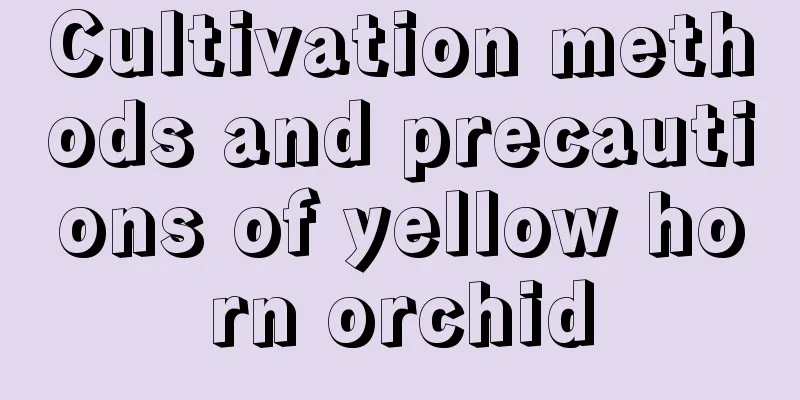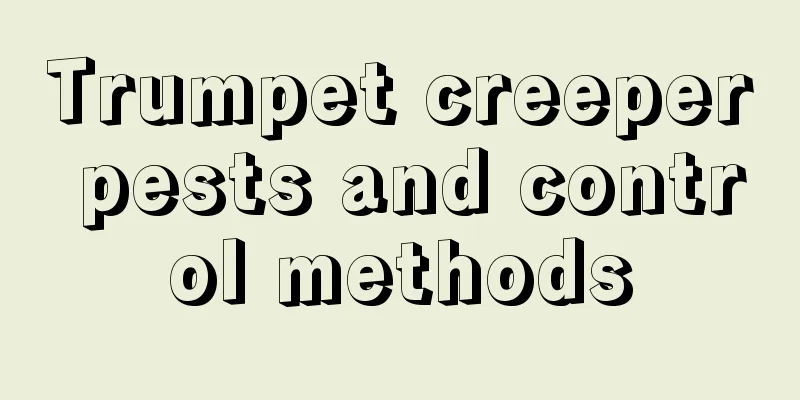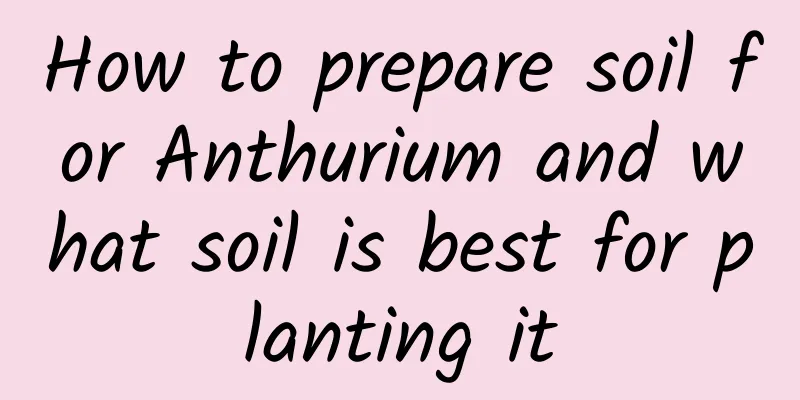Cultivation methods and precautions of yellow horn orchid

1. Breeding methods1. Pot soil selectionIf it is a domesticated yellow horn orchid, when choosing the potting soil, try to choose one that is loose and breathable, and it is best if it contains rich humus. Then choose a clay pot, purple clay pot or a plastic pot with many small holes at the bottom with good ventilation, put the soil in it, and the potting soil is ready. 2. Change the pot at the right timeWhen repotting, we need to choose the correct pot size based on its crown and age so that it can grow vigorously. When repotting, it is usually best to wait until the soil in the pot is slightly dry. First, slowly turn the pot upside down, hold the pot with one hand, and hold the plant with the other hand, then take it out and put it in the new pot. 3. Suitable breeding locationIn March and April every year, we can move it outdoors to receive sunlight. When the temperature is high in summer, it is appropriate to build a shed to provide shade so that it can receive the morning sun while avoiding the afternoon sun to prevent sunburn. 4. WateringIt is very afraid of moisture and not very resistant to drought, so it should be watered in moderation. Each time you water, you should water it thoroughly, just keep the soil in the pot moist, and never water it every day. In addition, after each rain, drain the accumulated water in the pot in time to prevent root rot. 5. Suitable temperatureIt is very afraid of cold, so if you are not growing in the south, you should move it indoors as much as possible in winter, and the temperature should be kept at least above 5 degrees. If it is hot in summer, you should cool it down in time so that it can grow normally. 6. Suitable lightingIt loves sunlight very much. In summer, we can put it in a shade shed, open the curtains every morning, let it receive the sun before 9 o'clock, and then cover the curtains. If you move it indoors, place it in a sunny spot. 2. PrecautionsWhen raising it, we will always encounter some diseases and pests, so we should try to ventilate it more, control the amount of watering, and loosen the soil appropriately to prevent diseases. If insect pests occur accidentally, you should spray them with pesticides in time to suppress the pests as soon as possible. |
<<: What soil is used to grow pennywort
>>: Are white orchids and yellow horn orchids the same?
Recommend
Will the blue stone lotus die after flowering?
When does blue stone lotus bloom? First of all, o...
How to care for hydroponic dried azalea
Dry azalea hydroponic method 1. Before hydroponic...
Can jujube trees be potted?
Can jujube trees be potted? Jujube trees can be p...
What should I pay attention to when digitalis blooms?
Fertilizing Digitalis Flowering It is important t...
Grapefruit seed germination conditions and planting requirements
1. Seed germination conditions If you want the gr...
What to do if the leaves of seven-leaf lotus produce oil
The reason for this situation First of all, we mu...
How to grow Dutch chrysanthemums in autumn
1. Autumn maintenance is important Autumn mainten...
How to grow konjac to get high yield?
Konjac is a food ingredient rich in nutritional v...
Does Wisteria prefer shade or sun?
Does Wisteria prefer shade or sun? Wisteria is ve...
What flowers are good for Feng Shui at home: Eight kinds of plants that bring wealth and prosperity to the home!
1. Smooth sailing "Smooth Sailing" is a...
A flower lover took only two months to grow a bare money tree into a lush and leafy one. How did he do it?
1. If the money tree doesn’t grow, it’s probably ...
Are lilies poisonous when placed indoors?
1. Is it toxic? Lily is a non-toxic flower and it...
Cutting propagation method of purple leaf Oxalis
Cutting propagation time Purple-leaved sorrel can...
Perilla growth environment conditions and characteristics
Perilla growth environment conditions and require...
Honeysuckle propagation method
Seed propagation of honeysuckle In autumn, pick t...









